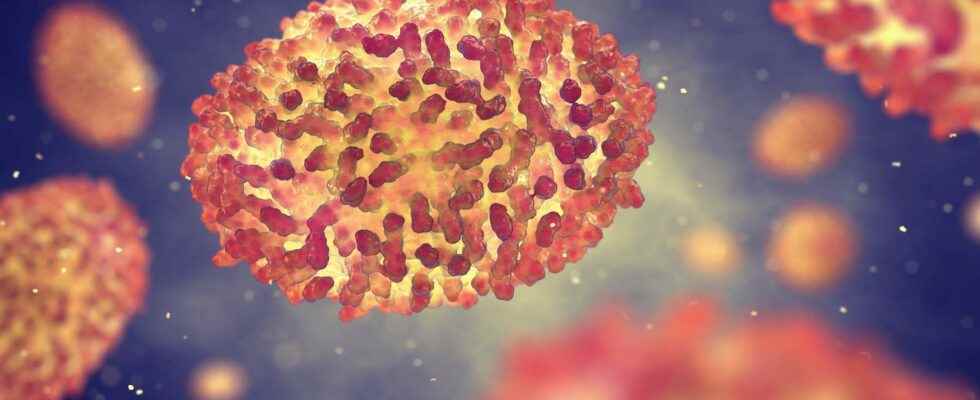You will also be interested
After the announcement of the first French case on Friday May 20, 2022, Public Health France indicates that five cases are now confirmed of smallpox monkey, or monkeypox, and that 15 others are being analyzed. These 20 patients are mostly young men. So far, no deaths have been reported. If this is not the first occurrence of the virus outside Africa – cases of monkeypox imported from Nigeria had been recorded in England, Israel and Singapore in 2018 – it remains unusual in its scale and its lack of apparent link with sub-Saharan Africa where the disease is endemic. Let’s focus on the smallpox virus of the monkey currently circulating in Europe and North America.
Where does monkeypox come from?
the virus monkeypox belongs to the family of Poxviridae and gender Orthopoxvirus such as the human smallpox virus, eradicated today thanks to a worldwide vaccination campaign, and vaccinia. It was first discovered in 1958 in Denmark, in laboratory monkeys that showed Rashes typical of the disease. Its name comes from there, but it is not an exclusively simian virus, it can infect a wide variety of mammals including rodents and humans. The first human case of monkeypox was identified in the Democratic Republic of Congo in 1970.
Monkeypox is a zoonotic disease, meaning that humans contract it following exposure to an infected animal (bite, scratches, biological fluids) or by the consumption of undercooked meat. Human-to-human transmission occurs primarily through respiratory droplets and requires prolonged face-to-face contact. Sexual intercourse is therefore conducive to the spread of the virus, but that does not make it a sexually transmitted infection. It can also be transmitted through contact with body fluids, broken skin, or contaminated surfaces.
Phylogenetically speaking, monkeypox virus strains are grouped into two clades : the “West Africa” clade and the “Congo Basin” clade. According to the first data of sequencing, obtained on a Portuguese sample taken on May 4, the strain that is currently circulating belongs to the “West Africa” clade and is thought to be related to that responsible for the 2018 cases. Strains from the “Congo Basin” clade have a case fatality rate of around 10%, while that clade “West Africa” is 1 to 2% in the general population, but around 5 to 6% when considering immunocompromised or HIV-infected patients. This is much less than the 30 to 50% lethality of smallpox. Further genomic analyzes are expected to understand the origin of the cases and the link that unites them.
Smallpox vaccine to the rescue?
Since the eradication of smallpox, the latest vaccine designed (IMVANEX® in Europe, JYNNEOS® in the United States, and IMVAMUNE® in Canada) against the latter is no longer administered, but it could come out of the freezers to fight against cases of monkeypox. Bavarian Nordic, the pharmaceutical company that produces it, has signed a contract with a European country, not mentioned in press release, to provide him with doses. IMVANEX® has been authorized by the European Medicines Agency since 2013exceptionally, against smallpox but not against monkeypox for which there are no safety and efficacy data.
Rather than mass vaccination, a ring strategy – vaccinating confirmed cases and their contact – could be preferred. The health authorities of the countries concerned should soon decide on the approach to be adopted to limit the spread of cases of monkeypox; the involvement of the smallpox vaccine remains to be confirmed.
Interested in what you just read?
